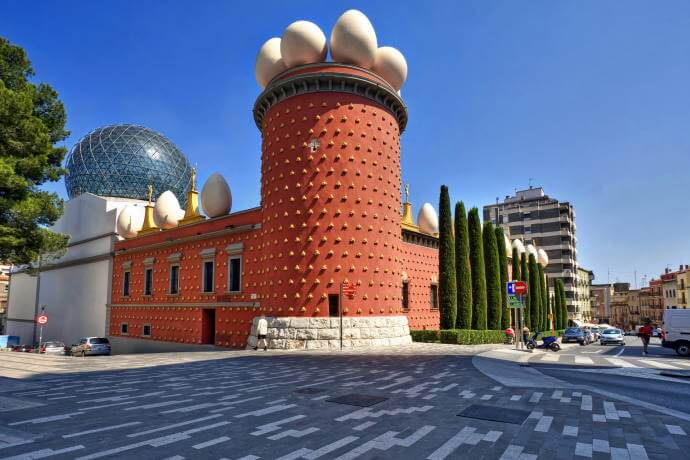Culture and tourism are two themes that walk hand in hand in both countries in the Iberian Peninsula, Spain and Portugal. The incredibly long and rich history of these two nations is present everywhere - sometimes in the least suspected places. You can see it in the different architecture, in the spoken dialects and even in the traditional gastronomy of each region. However, it is in the museums that you can have the clearest idea about how historical and cultural traits developed on both sides of the Peninsula, and how they are still present in today’s life. The choices are many as there is a profusion of themes and good excuses that enable the creation of museums in the Iberian Peninsula, but we had to narrow it down, in order to avoid spoiling any surprises for you!
These are some of the most iconic museums, both in their region and in the Iberian Peninsula. Hopefully, this short list will allow you to start making plans, in a way that you will get to visit all the places that really matter!
When in Spain...
Dalí Theater-Museum, Figueres
If you are visiting Barcelona and the Catalonia region, you should take a detour to Figueres, the birth and death place of the early 20th-century surrealist artist Salvador Dalí. It takes less than 2 hours driving to get there, and the town is well worth the visit thanks to its mix of ancient and modern architecture and its many cultural manifestations. Here you will find the Dalí Theater-Museum, a former theater bombed during the Spanish Civil War that Dali himself, with the help of the town’s mayor, converted into a museum housing his work. Even the building itself is a curiosity: it is considered the largest surrealist object in the world and it is a display of Dalí's art in all its splendor.
Take your time going through this fantastic museum, as it exhibits important works by the painter that are worth getting to know deeply, ranging from his early artistic experiences to his latest creations. The tour itself is a whole experience, introducing the visitor to the incomparable and enthralling world of Salvador Dalí.
Picasso Museum, Málaga
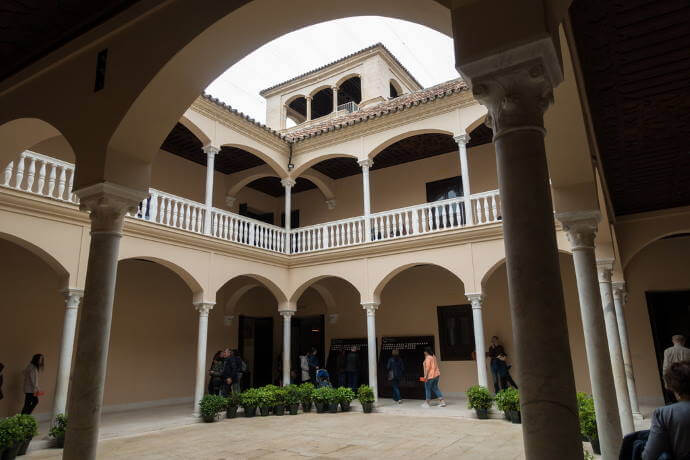
If ever an excuse was needed to spend a part of one’s holiday in a coastal town of a sunny country with good food and wines, while exploring historical streets, listening to flamenco and enjoying stunning views, then the Picasso Museum in the city of Málaga in Andalusia is that excuse!
Andalusia is a region of many charms and Málaga is the jewel at the heart of it. A trip to the city which was the birth and childhood place of Picasso can only be considered complete after a visit to the museum celebrating the artist’s life. This museum was a desire of Pablo Picasso himself: he meant to have the most part of his work in the city where he was born.
It is in the Palacio de Buenavista, in Calle San Agustín, that the Picasso Museum is located. This is a building well representative of Andalusian Renaissance secular architecture. The permanent exhibition consists of a selection of pieces from the private collection of two of Picasso’s grandchildren, Christine Ruiz-Picasso and Bernard Ruiz-Picasso, although there are also temporary exhibitions and a variety of educational and cultural activities on subjects related to Picasso. The museum is home to more than 200 works which cover the many styles, materials, and techniques developed by this genius artist of the 20th century.
Prado Museum, Madrid
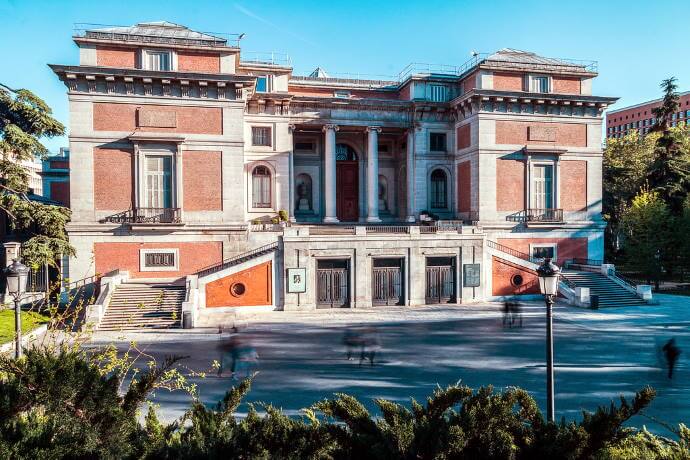
The city of Madrid can be the sole reason for one to get on a plane and travel to Spain. The capital city is home to a fantastic universe of culture, history and historical places, music, food and an unparalleled vibe within Europe. If you had limited time or would rather explore the different neighborhoods of Madrid, and had to choose only one museum in Madrid, than that had to be the Prado Museum.
This is home to the most complete collection of Spanish paintings from the 11th to the 18th century. You will also see many masterpieces of equally great painters of worldwide importance, such as El Greco, Velázquez, Goya, El Bosco, Titian, Van Dyck, and Rembrandt. It hardly comes as a surprise to learn that the Prado Museum is one of the richest in the world, given the quality and variety of its collection. In every room there is something that you will recognize, whether from your History books or by some mention in a film or a novel. “The Girls” by Velázquez, “Las Majas” by Goya, or even “The Garden of Delights” by El Bosco and many other incredible paintings are examples of this.
The museum was created initially with the purpose to house both painting and sculpture works, but it has proceeded to gather important collections of drawings, engravings, coins and decorative arts. If you love the outdoors, you will be thrilled to know that the museum is in between two beautiful green areas of Madrid: Paseo del Prado, a classical European boulevard, and Parque del Buen Retiro, an impressive green patch with artificial lakes and a variety of trees and plants in the core of Madrid. Unmissable, that’s what we say!
Reina Sofia Museum, Madrid

The surprises of Madrid are endless and the Reina Sofia Museum is yet another fantastic place that you will surely want to have on your bucket list for the city! Just 10 minutes walking from Prado Museum you will find the Reina Sofia Museum, which is well worth the detour. Located in a former hospital from the late 18th century, the increased growth of the collection eventually made it necessary to expand to a new building in 2005. The museum opened in the year of 1990 and it was meant to be also a Center of Art, a continuation of its neighbor Prado Museum, and where Spanish and international art would be represented from the end of the 19th century to the present times.
Currently there are more than 18,000 pieces that make up the collection, including the famous painting “Guernica” by Pablo Picasso, a starting point for many of the activities and exhibitions in the museum. In recent years, the collection has been rearranged, focusing in the museum's distinctive features, such as Surrealism, the 1937 Republic Pavilion, and the Spanish Informalism of the 1950s.
Come to Madrid and enjoy a day well spent strolling around beautiful parks and incredible pieces of art!
Picasso Museum, Barcelona
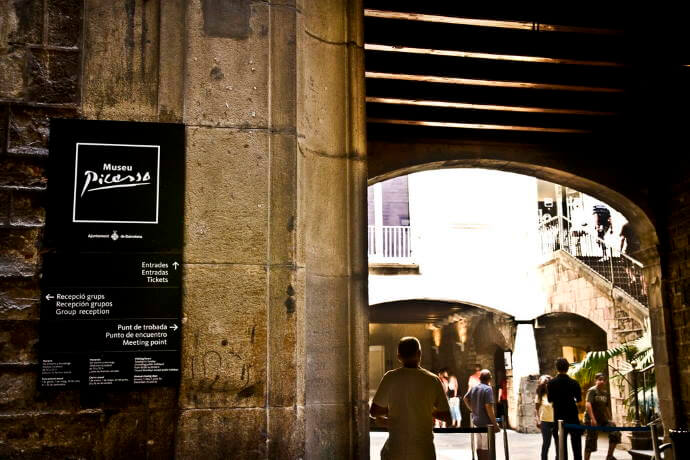
The city of Barcelona can actually be considered a museum in itself, displaying an incredible variety of art and architecture from different times at every corner. The great 20th century surrealist artist Pablo Picasso lived a part of his life in Barcelona in the beginning of the 20th century, a time of many social convulsions and change. These are all deeply reflected in the way he manifests artistically later in life. He was well aware of the impact of the city in his work, especially in his Blue Period. It is precisely because of those ties between him and the city that the Museum Picasso was installed in Barcelona in 1963, through the joint efforts of Picasso himself and a group of close friends of his, including Jaume Sabartés, the donor of the majority of the collection that has over 4000 pieces.
Take the chance to walk along the ancient streets of the El Gótic neighborhood and see the hidden gems of the area, like the Santa Maria Del Mar, a Gothic cathedral of the 14th century, or the impressive Palau de La Música Catalana, an opera house all in Art Décor style and a UNESCO Heritage site since 1997. Use the museum's location as a starting point for further exploring the city at your pace, enjoying it like a true Catalan!
Joan Miró Foundation, Barcelona

Before you leave Barcelona, there is one more stop that is truly unmissable: the Joan Miró Foundation and Museum, on the Montjuïc hill. The painter was born in the city in the year of 1893 and is considered one of the leaders of the Surrealist movement in the 20th century.
The Joan Miró Foundation opened in 1975 after a proposition by Joan Miró himself. It was created from his private collection, and it’s the museum of reference worldwide for the Barcelonan painter’s work – it includes more than 14,000 works, such as paintings and also sculptures, drawings, sketches, ceramics, and textiles. Even though the space is still focused on Joan Miró’s artistic legacy, today it also holds various temporary exhibits of other contemporary artists.
Take the time to ramble in the surrounding gardens of the Montjuïc Park, a former exhibit area of over 250 hectares (617 acres) of greenery dotted with different theme gardens and artistic pavilions, some by famous artists on a hill overlooking Barcelona. The display is even more beautiful in the evening, when the city gets all illuminated. A true sky full of stars!
When in Portugal...
Amadeo de Souza-Cardoso Museum, Amarante
If you are visiting Porto, drive about 90 minutes towards the East and you will be at the gorgeous city of Amarante, one of the best hidden secrets of the North of Portugal. Amarante is a lively city where there is always something going on: be it music, cinema, poetry, or activities for children and families. Amadeo de Souza-Cardoso was born here in 1887 and the city is proud and likes to celebrate the fact that it is the home of one of the most genial artists of 20th century Portugal.
Considered a Surrealist, a Modernist, an Abstractionist and even a Futurist, Souza-Cardoso lived in Paris for many years, yet was always present in the Portuguese artistic scene as a painter and illustrator breaking with norms and creating a new, unique view of the world with his work. Having gone through some of the most marking events of the beginning of the century, he transported those feelings into his work in a way that it is impossible to remain indifferent. Amadeo de Souza-Cardoso was considered both a rebel and a genius. A true enfant-térrible of the Portuguese arts!
The museum in Amarante is a celebration of that short but intense life of the artist, and of many other contemporary artists. Set in the grounds of a former convent, the museum opened doors in 1947 with works by several artists related to the city. Nowadays, the museum works like a bridge between modern art and the population, holding several courses and activities for the general public. However there is much more to Amarante!
If you already are a fan of Portuguese pastries, you will be glad to know that here you will be able to find several pastry shops that make the traditional convent sweets of the region, such as the classic phallic-shaped cake of São Gonçalo. The gastronomy is also of the most exquisite type, with sausages, cheeses, and wines from the region present in the numerous restaurants in town. The reasons for a visit are many - you take your pick!
Foundation and Museum of Serralves, Porto
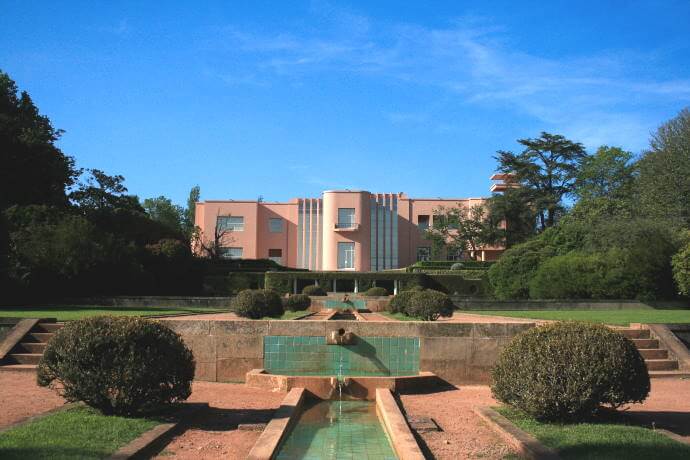
Nowadays, talking about Serralves is almost the same as talking about Porto. The city has a close relationship with its most iconic museum! Serralves is the center of the artistic life of Porto and also an educational venue where a lot of events, courses, activities, workshops, concerts and many other cultural manifestations are constantly taking place throughout the year.
The Serralves Foundation was created in 1989 and from it the Museum of Contemporary Art was developed. In 1991, the renowned architect Álvaro Siza Vieira was commissioned to design the new museum in the grounds of the Serralves Estate, built in Art Déco style in the early years of the 20th century by an aristocrat from Porto. The Museum was inaugurated in 1999 and immediately assumed a ground-breaking role and claimed international ambitions by inviting new and innovative creators from the Portuguese artistic panorama, but also many artists from around the globe.
Today, the space encompasses five distinct areas: the Museum of Contemporary Art, the Serralves Park, the Treetop Walk, the Serralves Villa and the House of Cinema Manoel de Oliveira, a museum dedicated to cinema and to the moving image, named after the most famous film director of Portugal who died in 2015 at the incredible age of 106 years (and still making films)!
Serralves has the potential to fill a whole day, or even more, of your holidays in Portugal, with its very complete programs all year round and distinct exhibition sites. The area around is also worthy of a visit: make sure you go down to the Foz area, an upscale residential area on the banks of the River Douro. From there you can walk to Ribeira or even take a tram to the center of town. Enjoy the views of the next town, Vila Nova de Gaia, and its wineries, and of the traditional Rabelo boats gliding along the calm waters of the river. Porto is a special place; we promise you that!
Machado de Castro National Museum, Coimbra
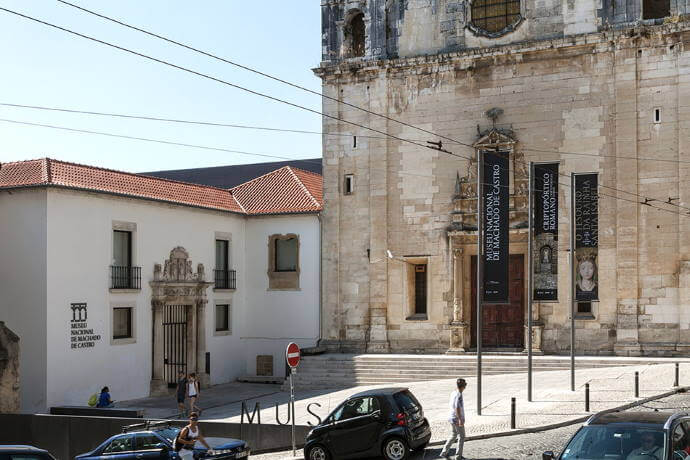
The city of Coimbra is home to some of the best-preserved heritage of Portugal. This is the oldest University city in the country and the second oldest in Europe. The true value of history is deeply appreciated here. Besides the University grounds and its jaw-dropping, gold decorated library, there are other sites and museums well worth a visit. That is the case of the Machado de Castro, a fine arts museum founded in 1911, opened to the public in 1913.
The museum occupies the former Bishop’s Palace building, built over the underground galleries of the Roman forum of Æminium, dating from the 1st century. The museum's name intends to pay homage to one of the greatest figures of Portuguese national sculpture, Joaquim Machado de Castro, who was born on the outskirts of Coimbra in 1731, and was a royal sculptor.
The Machado de Castro National Museum is one of the most important fine arts and archaeology museums in Portugal, presenting important collections of paintings, sculptures and decorative arts, covering a historical period of more than two thousand years.
Coimbra is a city of traditions, so you will be able to enjoy the best that the country has to offer in a nutshell: the food and wine, the Fado of Coimbra singing style and the University students with their black cloaks going up and down the cobbled streets of the city will definitely be part of your best memories of Portugal upon your return home!
Museum and Foundation Calouste Gulbenkian, Lisbon
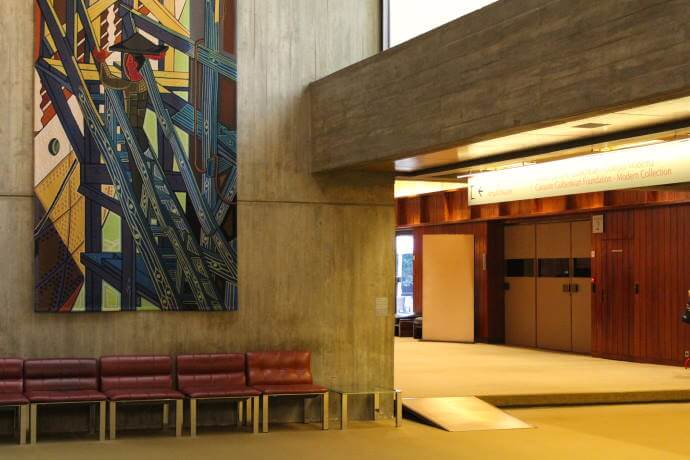
Welcome to the vibrant capital of Portugal, the city where everything takes place and where there is always something for everybody’s taste! Lisbon’s museums are top quality ones and well worthy of a full itinerary, but some are really unmissable. That is the particular case of the Calouste Gulbenkian Museum.
Calouste Sarkis Gulbenkian was born in Üsküdar, in Turkey, from Armenian parents, in the so-called Ottoman Empire. In 1896, due to the persecution suffered by the Armenian community, the Gulbenkian family left Turkey for Egypt and later for London, where Calouste acquired British nationality and started working in the oil extraction business, while all the time collecting art, a passion that he pursued throughout his life. After some time in Paris and with the outbreak of the World War Two, Calouste Gulbenkian moved to Lisbon, where he remained until his death in 1955. During his lifetime he gathered an incredibly eclectic collection much influenced by his travels and personal taste.
With an array of over 6000 pieces going back to ancient Egypt, ancient Greece, Babylonia, Armenia, Persia, Islamic Art, Europe, and Japan, the museum is a never-ending feast for the eyes and for the soul of the artist in you. The building itself is a masterpiece of modern architecture, as it was constructed from scratch to house the Gulbenkian collection and having in mind the best way to display each one of the objects.
Before you go, enjoy some time in the gardens of the museum. These are part of the most iconic modern gardens in Portugal and a truly perfect example of Portuguese landscape architecture. Be amazed at the way they flow naturally around the museum, leaving you with the feeling that they are part of the same space as a unit. Within easy reach by Metro or by bus, this museum is a must-go even if you just have a few days in Lisbon!
National Museum of Ancient Art (Museu Nacional de Arte Antiga), Lisbon
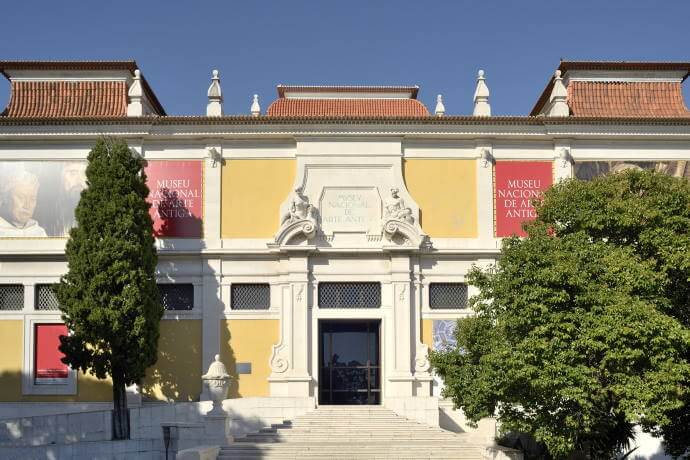
The Museum of Ancient Art in Lisbon was founded in 1884 and is one of the oldest museums in Portugal and one of the most important in Europe. It is the home to a fantastic gallery of portraits and objects that will tell you about the history of Portugal in its different moments and protagonists from the middle ages to the 19th century. The building, a masterpiece of 17th century architecture, is perfectly located overlooking the Tejo (Tagus) River and boasts a flowery, sheltered garden on the top floor next to the cafeteria, which is one of its highlights!
The museum holds more than 40,000 pieces, covering more than a millennium of art from Europe, Asia, Africa, and the Americas. It also includes notable works of art by Hieronymus Bosch, Raphael, Hans Holbein the Elder, Francisco de Zurbarán, Albrecht Dürer and many others, but also paintings, sculptures, furniture and ceramics related to the Portuguese history and to the different materials and styles used along the different periods in time.
Wander around the neighborhood to find out some nice and less crowded restaurants and cafes nearby and head to the city center on foot up the hills, passing centuries-old churches, cobbled streets and old funiculars still running. At the top, reward yourself with a shot of Ginjinha, a morello-cherry liquor that can take away all the tiredness in a matter of seconds!
National Glazed Tile Museum (Museu Nacional do Azulejo), Lisbon
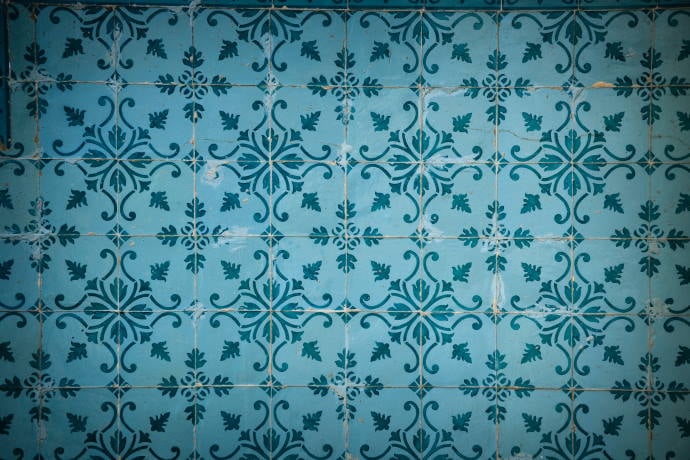
One of the images that will probably come to mind when you think of Lisbon is one of glazed tiles covering the walls of houses, palaces and churches and reflecting marvelously the sun light. That is only natural since the Muslim art of keeping the façades beautiful by using glazed tiles to cover them has been around for over a millennium and is still very much alive in Portugal and specifically in Lisbon.
The National Glazed Tile Museum is considered one of the most important museums in Portugal, both by the uniqueness of its collection and by the fact that the building that houses the museum is the former Madre de Deus Convent, founded in 1509 by the queen of Portugal. The museum's collections allows you to travel through time to find out more about the origins of the Azulejo (glazed tile) in Portugal from the 15th century till the present day. The former Convent also has an amazingly decorated church in full Portuguese Baroque splendor, with gilded and carved wood, paintings and tile panels.
From there, you can take a stretch to the Parque das Nações which in contrast with the previous site, is the most modern district of Lisbon: sitting on the banks of the shallowest part of the River Tagus, the previously derelict industrial area of Lisbon became a trendy, upscale section of the capital after the 1998 World Expo that took place here and reorganized the neighborhood. Some of the best restaurants and bars are located here next to luxury hotels with a view to the river and to some of the most incredible modern architecture that you will find in the city. You might want to spend some time exploring the area and the nearby Oceanário, one of the largest fish aquariums in Europe and also an unmissable visit in this neighborhood!
Keep in mind that a visit to a museum can depend very much on your own personal taste and also the amount of free time that you might have. These are museums that represent the true Iberian soul and history, and if you do choose at least some of them, you will end up with a better idea about Portuguese and Spanish culture. We are looking forward to hearing about your own favorites and what you have included in your bucket-list for Portugal and Spain. See you soon?


